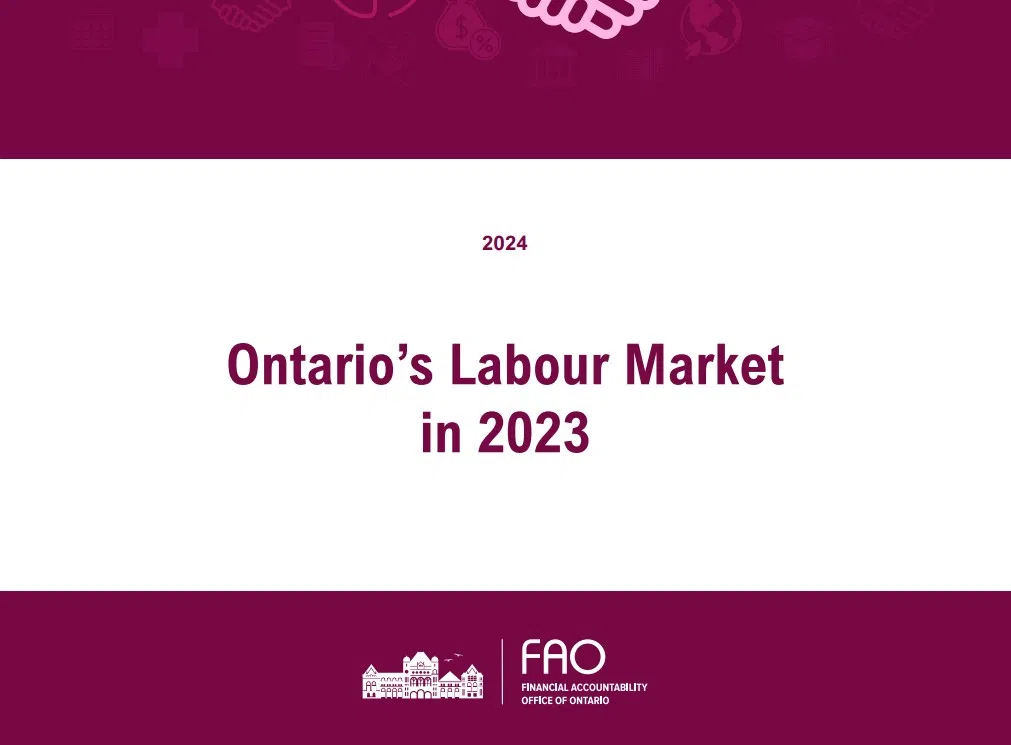The job market in Ontario appears to be softening.
A report from the Financial Accountability Office of Ontario says the province saw over 183 thousand new jobs created in 2023.
That is half of what was experienced in each of the last two years.
High job vacancies in several sectors did lead to a record number of people entering the labour force, leading to the unemployment rate increasing a tick from 5.6% in 2022 to 5.7%.
“Although Ontario’s working age population increased at the fastest pace on record at 2.3 per cent in 2023, the rise in the province’s labour force was even larger (2.5 per cent). As a result, the labour market participation rate edged up to 65.5 per cent, the highest rate since 2015,” the report states.
However, the FAO says the number of vacancies fell by almost 25 per cent.
“Long-term job vacancies, defined as positions that remained unfilled for 90 days or more, represented 34.2 per cent of all job vacancies in the third quarter of 2023, down from a peak of 37.2 per cent in the fourth quarter of 2022.”
Northwestern Ontario continues to be the exception as the unemployment rate is lower than the provincial rate, and organizations and businesses in almost every sector continue to suffer through labour shortages.
The number of young people in the workforce grew at 1.8%, which was the slowest pace among all other age groups.
Job growth within the public sector also lagged behind that within the private sector after strong gains in the previous two years.
The FAO also finds the number of people self-employed falling to its lowest level since 1991.
The report also looks at wage growth.
It says the average hourly wage of Ontario workers increased by 5.1% last year to $34.63, exceeding the year’s average inflation rate of 3.8 percent.
However, part-time workers saw their wages increase an average of 2.8 per cent.
To read the entire report, click here.




